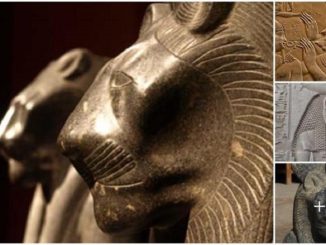According to the latest research, Stone Age hunter-gatherers in northeast Europe expertly crafted slate friendship rings some 6,000 years ago. These were produced in copious numbers by many makers in what seems to have been some kind of mass manufacturing process. Some of these friendship ring ornaments were then deliberately broken into fragments, many of which were further fashioned into pendants. And all of this suggests these communities were part of a regional trade network, which the latest study results also confirm.
A study published in the Journal of Archaeological Method and Theory has examined these so-called friendship ring ornaments found at several large Stone Age sites in Finland. In fact, they were rarely used or found as intact rings. The broken fragments probably served as tokens that symbolized social relations related to the gift-giving system in these hunter-gatherer communities, the University of Helsinki press release stated.
The study was conducted by a team of researchers from the University of Helsinki and University of Turku, which matched broken fragments of the friendship ring ornaments, analyzed their geochemical composition, and investigated traces of use and manufacture to arrive at their conclusions, reported the Science Times.
Two large intact Stone Age friendship rings discovered in an early 4th millennium BC Finnish hunter-gatherer burial, together with the five flint projectile points. (M. Miettinen 1988 / Finnish Heritage Agency)
Friendship Rings’ Mass Production Points to Trade Network
The Stone Age friendship rings and other ornaments were found in large central sites or site clusters all over Finland that usually had burial grounds near them. This means that these were special locations where the hunter-gatherers returned from time to time.
Sami Spirituality and the Cult of the Sacred Stones
Submerged Stone Age Settlement ‘Opens Up New Path’ for Finnish Archeology
Chemical analysis has shown that the ornaments themselves were likely made in the Lake Onega region in Russia or at least this is where the slate source was traced to. This means that the objects or the slate was transported hundreds of kilometers to Finland through an extensive exchange or trade network. Possibly, they symbolized the connections established within the network.
“By comparing the elemental concentrations of the objects under investigation with findings published on the basis of international datasets, we were able to demonstrate that some of the ornaments or the stone material used in them were transported to Finland through an extensive exchange network, mainly from the Lake Onega region, “ Docent Elisabeth Holmqvist-Sipilä stated in the University of Helsinki press release.
The slate Stone Age friendship rings were found at the sites marked in red in Finland but the stone itself and the rings themselves came from much further east in the Onega Lake region of Russia, which suggests these hunter-gatherer societies had a pretty big trade network going. going. (P. Pesonen 2021 / Journal of Archaeological Method and Theory)
Accidentally Broken or Purposely Fragmented?
Archaeological remnants are rarely discovered one-hundred intact, and the ring ornaments considered percent being found in fragments was a natural result of their having been buried for so long. Postdoctoral researcher from the University of Helsinki, Marja Ahola, argues, however, that purposeful fragmentation rather than accidental breakage may be extracted for some of the broken pieces. These were then used in bartering, ritual activities, and social relations.
By matching fragments, analyzing geochemical composition, and investigating their traces of use and manufacture the researchers found that the ornaments had not only been worn, but also intentionally broken. Pieces of the same ornament have been found in two different locations, raising the possibility that they were worn by two different individuals. That one of the pieces has been more finely worked on than the other seems to add weight to this conjecture. “These fragments of the same object may show the handprint and preferences of two individuals. Perhaps they wore the ornaments as a symbol of a connection established,” contends Ahola in the University of Helsinki press release.
The ornaments also served perhaps to establish a link between the living and the dead as indicated by another set of two matching fragments, one found at a settlement site and the other at a nearby burial site. “What we see here may be one way of maintaining connection between the living and the dead. This is also the first clear material connection between a certain place of residence and a burial site. In other words, the people who lived there most likely buried their dead in a site close to them,” Ahola stated.
The researchers used X-ray fluorescence analysis (XRF) on some 50 slate ring ornaments kept in the collections of the Finnish Heritage Agency. XRF analysis can be used to determine the element concentrations and raw materials of inorganic archaeological materials with a very high degree of precision. It is an entirely non-invasive surface analysis, which makes it very suitable for the study of archaeological objects.Apart from establishing the Lake Onega provenance of the artifacts, the technique also demonstrates “variation in the chemical composition of the objects, which correlates with their design. These factors indicate that the ornaments were produced in the Lake Onega region in several batches, most likely in different locations and by a number of makers,” concluded Holmqvist-Sipilä.




